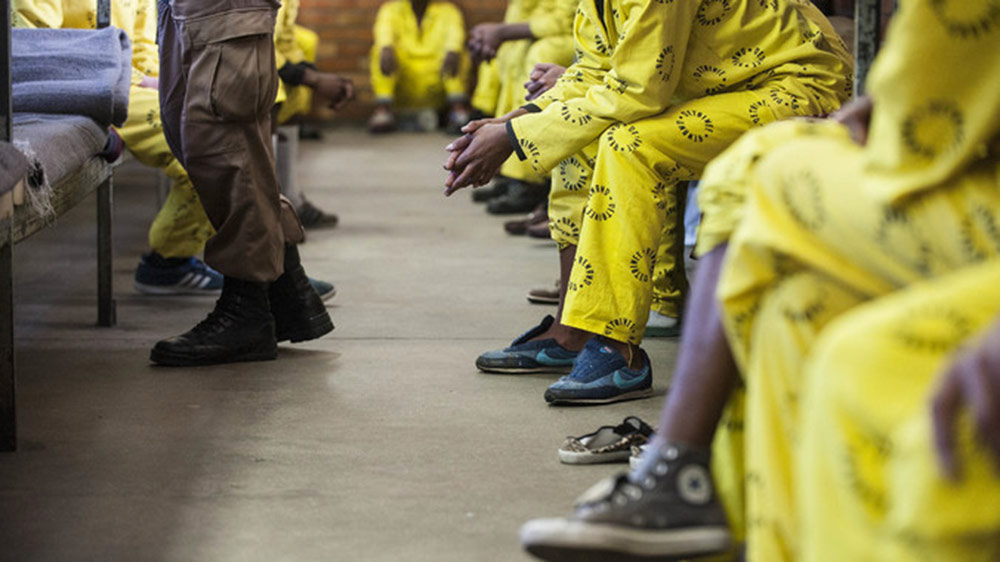Following the High Court decision in December 2016 directing the Department of Correctional Services (DCS) to immediately address the ‘deplorable’ overcrowding in Pollsmoor Remand, and the subsequent shuffling of sentenced inmates to other provinces, overcrowding in the facility for those awaiting trial is the lowest it’s been in the past five years – roughly 174% of its approved capacity. This is a significant victory for remand detainees, and warrants celebration. However, much more remains to be done.
The less frequently mentioned but more important element of the court order directed the South African government to draw up a ‘comprehensive plan’ including deadlines to address the extreme overcrowding in Pollsmoor Remand. Note: this order was directed at the government, not the Department of Correctional Services. This distinction is important because as DCS has pointed out, they are at the receiving end of a very long criminal justice conveyor belt, which chugs its way through the South African Police Service, state prosecutors, and courts, until it deposits detainees and inmates into a jam-packed prison system.
The Minister of Justice and Correctional Services filed this plan with the court at the end of February. Although it seeks to address the effects of overcrowding, which Sonke Gender Justice and Lawyers for Human Rights (LHR) appreciate, it does not go far enough, stopping far short of resolving the roots of the problem. In dealing with the effects of overcrowding, the plan is also too superficial, and at times seems to pass the buck, both to other departments of government and inmates alike. For example poor ventilation is blamed on inmates closing their cell windows; lack of reading material is attributed to a ‘poor or non-existent reading culture’ among inmates; and the mattress shortages and scarcity of exercise opportunities are due to the overcrowding.
This is concerning as it demonstrates a failure to critically engage with many of the problems. Is there evidence that there is a poor reading culture amongst detainees? Perhaps we could cultivate a stronger reading culture if more books were available? Might inmates be more likely to keep the windows open if they had blankets to keep them warm? These are some of the questions that Sonke and LHR are asking in our response to the government’s plan.
It’s simply not good enough for DCS to tell us that the problems are a result of overcrowding, a problem that they alone cannot solve, and then shrug their shoulders. What is needed is a human rights-grounded solution to the overcrowding itself, not just a solution to its effects. Moving inmates around will only work for so long before the system becomes backlogged again. Some out-of-the-box thinking is going to be required.
For example, two things lead to high remand populations: the number of people who are sent to remand, in other words, the number of people arrested and denied bail, and how long each of them remains in detention awaiting the resolution of their trial. While most of the time, neither of these factors falls within the control of DCS, they remain a clear starting point for addressing overcrowding: arrests, bail, and the criminal trial process.
The changes to bail legislation between 1995 and 1998 that allowed the government to flex its ‘tough on crime’ credentials made it far more difficult for people accused of crimes to get bail. It became so difficult in fact that in the same time period there was a 138% increase in remand detainees, bumping this population group from around 18 000 up to 43 000, where it has hovered ever since.
Jean Redpath, a researcher at the Civil Society Prison Reform Initiative, has also shown that more than half of the remand population stays in remand custody for more than 3 months, and nearly 20% stay in custody awaiting trial for more than a year. The evidence suggests that in 2012 only 1 out of 3 people sent to remand were ultimately convicted. In other words, a high number of arrests doesn’t translate into a high conviction rate, and studies have shown that it is convictions, rather than arrests or length of sentences, that deter criminals.
Like its preceding plans, the minister’s new strategy to address overcrowding in Pollsmoor Remand does not tackle any of these issues. This is not to say that we do not celebrate the gains made, or that we expect the DCS to solve these problems on its own. It cannot. A holistic and creative solution necessitates meaningful consultation and undertakings from all of the members of the justice, crime prevention and security cluster: SAPS, the NPA, Justice and Correctional Services, as well as National Treasury. It will most likely also require legislative and policy amendments, new targets and indicators for the effectiveness of the SAPS and the NPA, and innovative solutions such as one recently employed by Ghana in which roaming magistrates’ courts sit in prisons and hear cases, making provision for time already served in remand; or electronic monitoring of first-time accused, as has been frequently suggested by Nicro.
In short, it requires an entirely new approach to remand, and perhaps criminal justice.
However, the job of kick-starting the process falls to the DCS because it is this department that is ultimately responsible for the wellbeing of the detainees in its custody.
We therefore call upon the government, led by the minister of Justice and Correctional Services, to lead the way in a new direction, towards a new conception of crime prevention and rehabilitation.
The time for change is now. No more band-aid solutions, minister.








